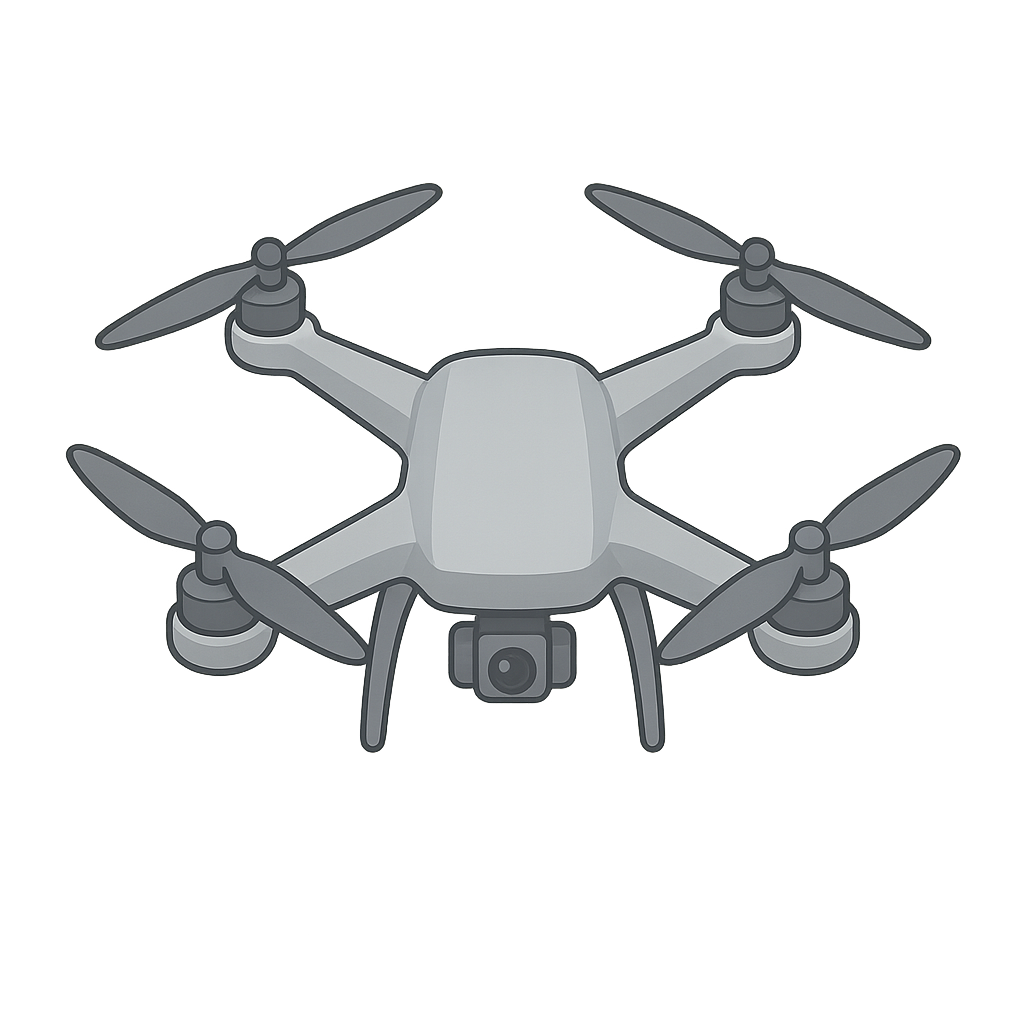My View From the Sky
Hello from up here. I am a drone, a flying machine with four propellers that whir like a hummingbird’s wings. From my spot high in the sky, the world looks like a beautiful map. Houses are like tiny toy blocks, cars crawl along roads like busy ants, and people are just little dots on a big green and gray blanket. I love the feeling of the wind rushing past me as I zip and zoom, using my camera like a keen eye to see everything below. You might think I’m a brand new invention, and in some ways, you’re right. But my family story started a long, long time ago, with a brilliant idea that didn’t even have wings. Before I could fly, someone had to imagine a way to move a machine without a person inside it. That incredible thought was my very first spark of life.
My journey to the sky began with a clever man named Nikola Tesla. He is like my great-grandfather. On November 8th, 1898, at a big exhibition in New York City, he amazed everyone with a small boat. What was so special about it? There was no one on it. He controlled it from a distance using invisible radio waves. It was pure magic to the people watching. That idea, that you could command a machine without touching it, was the seed that would one day grow into me. Decades later, my first flying ancestors were born. In 1918, during a big war, the Kettering Bug was created. It was one of the first pilotless airplanes, designed to fly on its own to a target. It was a simple machine, but it was a start. Then, in 1935, came the De Havilland Queen Bee. It was a radio-controlled airplane used by the military for target practice. The soldiers on the ground would aim at it to get better at shooting. Because it buzzed through the air like an insect, the pilots started calling it a 'drone,' which is another name for a male bee. The name stuck, and that’s how I got it.
For many years, my family members were mostly used for military practice. But a kind and very clever man named Abraham Karem saw a different future for me. In the 1970s, he dreamed that I could be more than just a flying target. He imagined me as a persistent eye in the sky, a helper that could fly for hours and hours, watching over things and helping people see faraway places without putting themselves in danger. He knew I needed to be strong but also light, and I needed to be able to fly for a very long time without getting tired. Mr. Karem worked tirelessly, designing and building new versions of me. He gave me better wings, a more efficient engine, and a smarter 'brain' to help me fly steadily and follow commands perfectly. He gave me the stamina to stay in the air not just for minutes, but for a whole day. Because he worked so hard to transform me from a simple remote-controlled plane into the useful, long-flying machine I am today, many people call him the 'father' of the modern drone. He gave me a real purpose.
Today, I have so many amazing jobs, and I get to help people all over the world. I soar high above movie sets, capturing breathtaking scenes that you see in theaters. My camera eye can dip and dive in ways a big helicopter can’t, making movies more exciting. I fly over vast fields of corn and wheat, helping farmers see which plants need more water or care, ensuring we all have enough food to eat. When a volcano is rumbling and about to erupt, I can fly close to its fiery peak, sending back information that keeps scientists safe. I even help deliver packages, flying over traffic to bring medicine or a special birthday gift right to someone’s doorstep. My work is just beginning. With every new idea, I learn new tricks. I love helping humans explore their world from a whole new point of view, reminding them that when we work together, the sky’s the limit for what we can achieve.
Reading Comprehension Questions
Click to see answer
